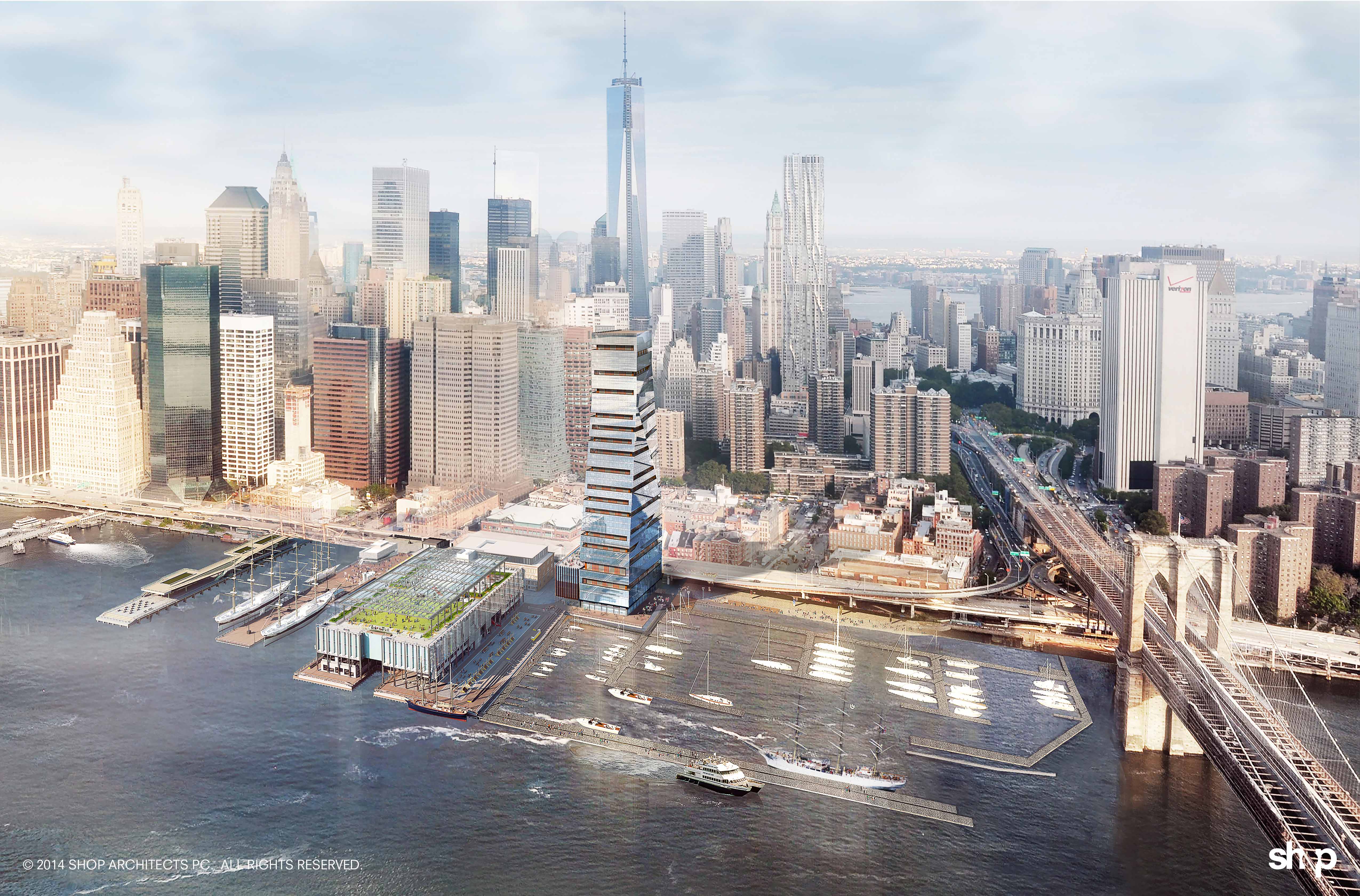This post has been read 2149 times!
 February 11, 2015- Whether the city allows the Howard Hughes real estate company to move forward with its South Street Seaport development plans will be decided soon. A key opponent is the Manhattan Borough President Gale Brewer, and she seems to be legitimately opposed to the plans on the grounds that the historic nature of the seaport would be lost (However in New York, winning at obstruction is a key way to command respect and future campaign donation). Various allies to the real estate industry who might have helped Howard Hughes, such as Sheldon Silver, have been taken out of the equation in the wake of Mr. Silver’s arrest and loss of his leadership position in Albany.
February 11, 2015- Whether the city allows the Howard Hughes real estate company to move forward with its South Street Seaport development plans will be decided soon. A key opponent is the Manhattan Borough President Gale Brewer, and she seems to be legitimately opposed to the plans on the grounds that the historic nature of the seaport would be lost (However in New York, winning at obstruction is a key way to command respect and future campaign donation). Various allies to the real estate industry who might have helped Howard Hughes, such as Sheldon Silver, have been taken out of the equation in the wake of Mr. Silver’s arrest and loss of his leadership position in Albany.
The Commercial Observer reports today, “Last week, Community Board 1 passed a resolution on the elements of Howard Hughes’ development proposal that sit within the historic district’s boundaries. The fate of the plan will soon be in the hands of the Landmarks Preservation Commission (LPC), the city agency responsible for protecting historic buildings and sites (though there is no set date yet for the LPC hearing). The question remains whether Landmarks will allow the design and whether Howard Hughes will be granted a Certificate of Appropriateness for the 10 different items proposed, including massive amounts of residential and retail space.
Seaport-area residents have voiced their concerns through the Seaport Working Group, a coalition formed by Manhattan Community Board 1, Councilmember Margaret Chin, Borough President Gale Brewer and other politicians. The City’s Economic Development Corporation, Department of Cultural Affairs, Department of City Planning participated, as did Howard Hughes. This was the first time that the city had ever conducted a pre-ULURP process of this nature.
Over the course of 10 months, the community group met and devised a set of guidelines for the development of the South Street Seaport Historic District. Though non-binding, these recommendations were not made hastily; the group met weekly for hours on end.
For Howard Hughes, ULURP can start after environmental inspection is complete and the requisite Landmarks approval is obtained. This could be as early as the latter half of 2015. However, to date, both Ms. Chin and Ms. Brewer have been vocal in their opposition to the proposed plan.
The most disputed element of Howard Hughes’ proposal that does not coincide with the Working Group’s guidelines is its 494-foot tower, slated to sit directly outside of the historic district. The guidelines outline that “alternatives to the proposed 50-story tower should be sought and any building on the New Market site should be contextual with the buildings within the South Street Seaport Historic District.” Howard Hughes has already announced revised plans for the tower, shrinking it from 600 feet to 494 feet.
“It’s not that we’re against the tower, it’s the location of the tower,” said Manhattan Borough President Gale Brewer.
Community Board 1’s resolution makes it clear that the Seaport area needs substantial improvements on a concrete timeline. But it also stresses that it will not support a proposal that does not meet all the guidelines of the Seaport Working Group.
On Feb. 5, Ms. Chin and Ms. Brewer sent a letter to Meenakshi Srinivasan, the chair of the New York City Landmarks Preservation Commission. In the letter, they say that it is virtually impossible to evaluate the plan without knowing the outcome of the inevitable negotiations that will happen during ULURP.
“We feel strongly that we and the public do not have adequate information with which to evaluate these precipitous applications to the Landmarks Commission,” the letter states, ultimately asking for LPC to postpone its review.
The resolution of this dispute is months, if not longer, away. As is consensus. “My view of this is to balance a lot of different points of view, to not be guided by my self-interest and to really put my faith in working with elected officials and stakeholders to really try to make this thing as good as it can be,” said Mr. Pasanella. “It’s an ongoing process. We’re trying to pull various interests together. It’s a hard puzzle.””
